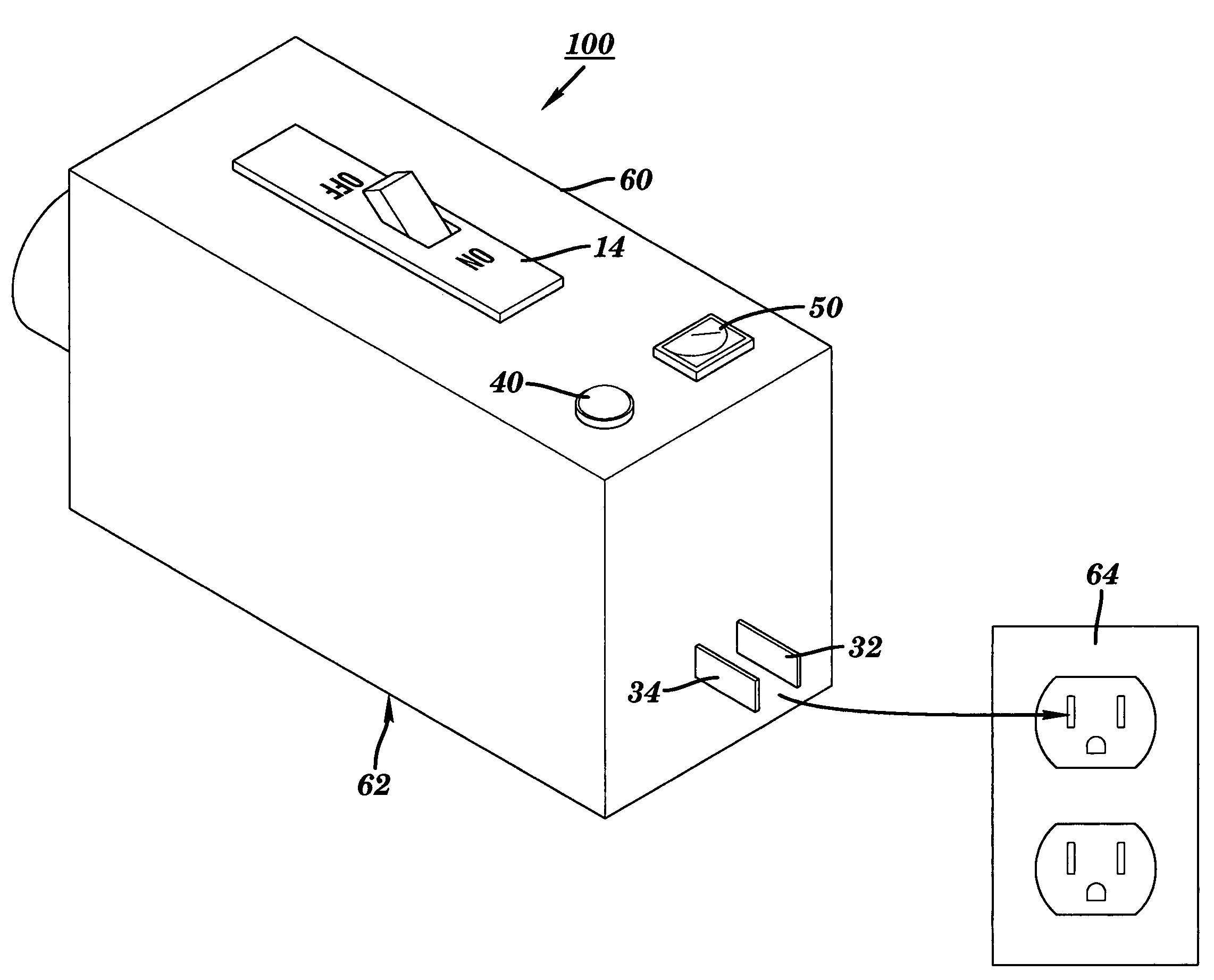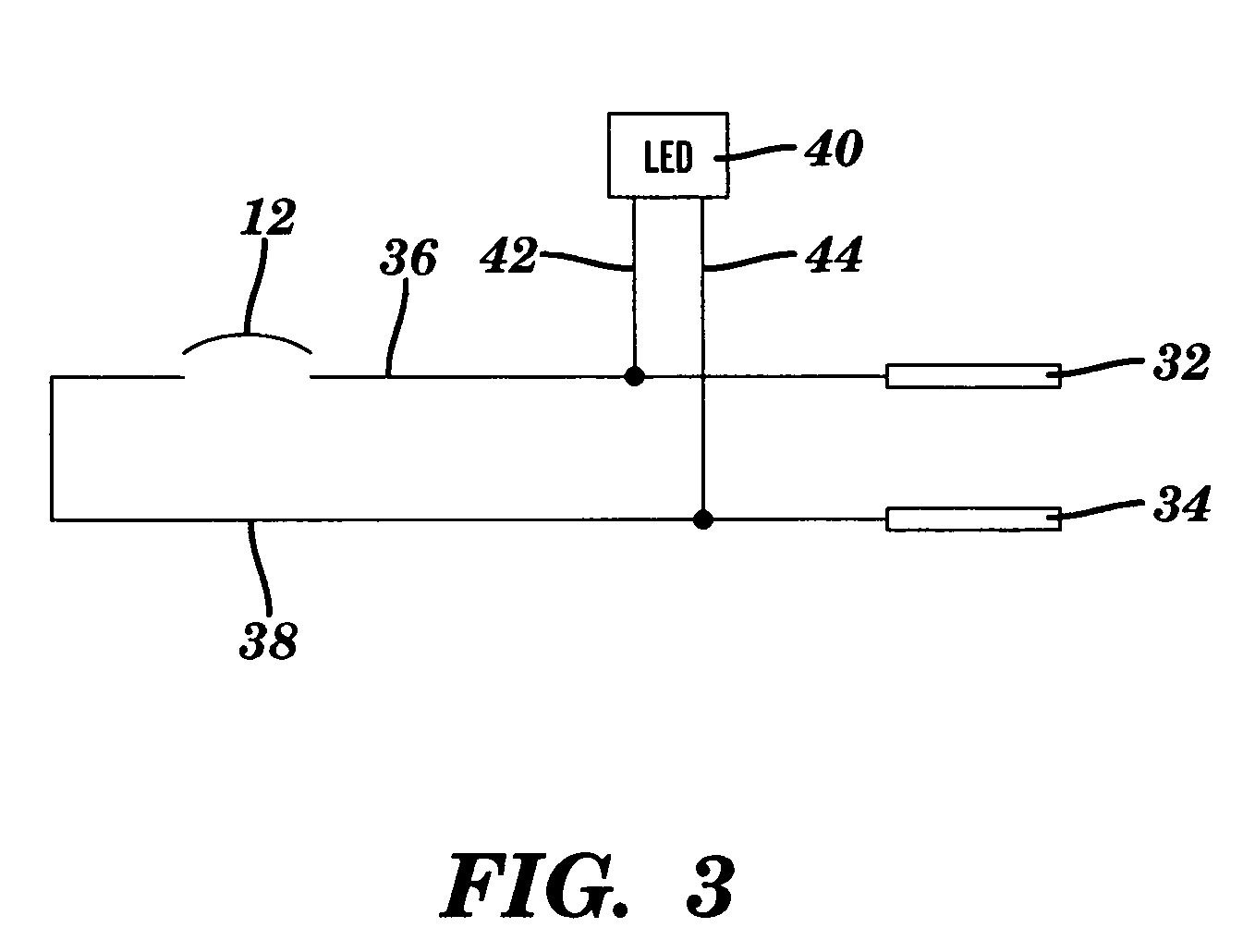Article for de-energizing a branch electrical circuit, and related processes
a branch electrical circuit and branch electrical circuit technology, applied in the direction of testing circuits, coupling device connections, instruments, etc., can solve the problems of arcing flashback, unmarked breaker, time-consuming steps,
- Summary
- Abstract
- Description
- Claims
- Application Information
AI Technical Summary
Benefits of technology
Problems solved by technology
Method used
Image
Examples
Embodiment Construction
[0039]FIGS. 1 and 2 are schematic representations of an embodiment of the present invention. De-energizing device 10 includes a circuit breaker 12. The invention is not limited to any particular type of circuit breaker. A large number of suitable circuit breakers are commercially available, from companies such as Square D, Siemens, Cutler Hammer, General Electric, and the like. Circuit breakers are available at many electrical supply houses, as well as retail outlets, e.g., local hardware stores, Lowes, and Home Depot.
[0040]Circuit breakers and related information regarding electrical circuits are described in many sources. Examples include “The Encyclopedia Americana”, International Edition 2002, Volume 6 (p. 734) and Volume 10, (pp. 130–135) (Grolier); “Step-by-Step Wiring”, Better Homes and Gardens, B. W. Allen, Editor, Meredith Corporation, 1997; “Complete Home Wiring”, Edited by S. Atkinson, Sunset Publishing Company, 2000; and “Electrical Basics”, R. Peters, Sterling Publishin...
PUM
 Login to View More
Login to View More Abstract
Description
Claims
Application Information
 Login to View More
Login to View More - R&D
- Intellectual Property
- Life Sciences
- Materials
- Tech Scout
- Unparalleled Data Quality
- Higher Quality Content
- 60% Fewer Hallucinations
Browse by: Latest US Patents, China's latest patents, Technical Efficacy Thesaurus, Application Domain, Technology Topic, Popular Technical Reports.
© 2025 PatSnap. All rights reserved.Legal|Privacy policy|Modern Slavery Act Transparency Statement|Sitemap|About US| Contact US: help@patsnap.com



